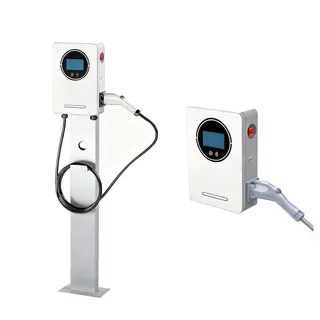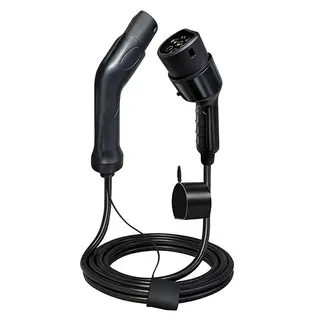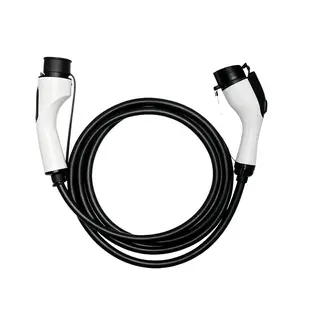In today's era of pursuing sustainable development, electric vehicles (EVs), with their eco-friendly and efficient characteristics, are gradually becoming a new choice for transportation. However, the popularization of EVs not only relies on their excellent performance but also depends on a key technological support: battery charging technology. Battery charging, seemingly a simple operation, actually involves complex scientific principles and precise technical requirements. It not only affects the driving range of EVs but also directly impacts battery lifespan and safety. Today, let us explore the secrets of EV battery charging and unlock the key to green mobility.
The process of charging an EV battery is essentially the conversion of electrical energy into chemical energy. When we charge a battery, electrical energy causes material accumulation at the battery's positive and negative electrodes. The structural characteristics of the battery determine that, during the charging process, as the state of charge gradually increases, the voltage across the positive and negative electrodes also rises.
An important concept here is charging voltage difference. The charging voltage difference refers to the difference between the output voltage of the charging motor and the battery voltage, which determines the magnitude of the charging current.
Imagine the battery as an "energy reservoir." During charging, we need to guide electrical energy, the "flow of water", into the reservoir. If the water level of the reservoir (battery voltage) is low, and the inflow (charging voltage) is very high, the water flow will be turbulent (large charging current), potentially damaging the reservoir's dam (causing battery overheating or even damage). Conversely, when the reservoir is nearly full, the flow becomes thin (small charging current), unable to meet the requirement for rapid filling. Therefore, a reasonable charging arrangement is crucial.
To better protect the battery and improve charging efficiency, the battery charging process is usually divided into four stages: pre-charging, fast charging, topping charge, and trickle charging.
For long-idle or brand-new batteries, starting directly with fast charging is inappropriate—similar to having a person who has not exercised for a long time participate in a marathon immediately, which the body cannot handle. Therefore, these batteries first require pre-charging. Pre-charging uses a small current to allow the battery to adapt to the charging process and meet certain charging conditions. This stage is like a warm-up exercise for the battery, preparing it for subsequent fast charging.
Fast charging is the critical stage in the charging process, aiming to quickly restore the battery's electrical energy using a large current. The fast charging rate is generally above 1C, meaning the battery can recover most of its capacity in a relatively short time. Fast charging is further divided into constant current charging and pulse charging.
Constant Current Charging: Like injecting a steady flow of water into a reservoir, it charges the battery with a constant current. The advantage is a stable charging process, but as battery voltage rises, the charging voltage must be continuously adjusted to maintain the current.
Pulse Charging: This method "massages" the battery, charging it with pulse currents and then briefly allowing it to discharge, repeating this cycle. This method better activates internal chemical reactions, improving charging efficiency.
However, it should be noted that with some fast charging methods, after fast charging ends, the battery may not be fully charged. This necessitates entering the next stage.
The purpose of topping charge is to ensure the battery reaches 100% capacity. In this stage, the charging rate is generally no more than 0.3C, and the charging current is relatively small. During topping charge, the battery temperature continues to rise. When the temperature exceeds the specified limit, the charger switches to trickle charging mode.
Trickle charging is a method to maintain the fully charged state of the battery. The charging current is very small, just enough to offset the battery's self-discharge. This method is harmless for batteries that are already fully charged, but for completely discharged batteries, the charging speed is too slow and unsuitable.
After understanding the four charging stages, let us look at the common methods of EV battery charging. The main methods are constant current charging, constant voltage charging, and pulse fast charging, and combinations of these methods can also be used depending on the situation. Modern intelligent battery chargers can flexibly set different charging methods according to the battery's condition and requirements.
Constant current charging maintains the charging current unchanged throughout the process. The advantage of this method is strong adaptability, ensuring the battery is fully charged and extending its lifespan. However, the drawback is also obvious. During charging, as battery voltage gradually rises, the charging voltage must be continuously adjusted to maintain the current, resulting in a relatively long charging time. Constant current charging includes the following specific methods:
Trickle Charging: Like "dripping water" into the battery, maintaining full charge, suitable for already charged batteries.
Minimum Current Charging: Minimizing the charging current while ensuring deeply discharged batteries can effectively restore capacity, suitable for slow charging scenarios.
Standard Charging: Charging at a standard rate for 14 hours, suitable for daily charging needs.
High-Rate (Fast) Charging: Fully charges the battery within 3 hours but requires automatic circuit control to protect the battery, suitable for scenarios with high time requirements.
Constant voltage charging maintains the charging voltage unchanged throughout the process. Its advantage is a shorter charging time and no need to adjust voltage, particularly suitable for topping charge. However, it also has drawbacks. As the battery’s electromotive force rises, the charging current decreases, easily leading to incomplete charging. Additionally, large initial currents may negatively affect the battery plates. Therefore, when using constant voltage charging, the charging voltage must be set reasonably, ensuring the current approaches zero as the battery approaches full charge.
Pulse charging is a relatively special method. It charges the battery with pulse currents, then allows the battery to briefly discharge with large pulses, repeatedly charging and discharging throughout the process. This method can better activate internal chemical reactions and improve charging efficiency, especially suitable for scenarios that require high charging efficiency.
EV battery charging is a complex process influenced by multiple factors. Understanding these factors helps choose appropriate charging methods and equipment, extend battery life, and improve charging efficiency.
Charging current significantly impacts charging time and battery life. Generally, the higher the current, the shorter the charging time. However, excessive current increases internal temperature, accelerating aging and shortening battery life. This is similar to water flowing too rapidly into a reservoir, potentially breaking the dam. Therefore, the appropriate current must be selected according to battery specifications. High-capacity batteries may require smaller currents for slow charging to ensure safety, while fast-charging stations require special technology and equipment to achieve high-current charging.
Charging voltage is also crucial. Too high a voltage may trigger excessive chemical reactions, generating heat and safety risks such as swelling or fire. Too low a voltage prevents full charging, affecting capacity and performance. Chargers must provide precise voltage control to ensure voltage stays within safe limits. Different battery types require different voltage settings—for example, LiFePO₄ batteries typically have lower charging voltages than LiCoO₂ batteries.
Ambient temperature significantly affects charging. Low temperatures slow chemical reactions and lithium-ion diffusion, slowing charging and possibly causing lithium plating. High temperatures accelerate aging and damage. Charging should avoid extreme temperatures. The optimal range is 10°C–30°C, with heating pads or cooling fans applied as needed.
Battery health is another critical factor. Over time and with repeated cycles, internal chemical composition changes, reducing performance. Increased internal resistance raises heat generation and reduces charging efficiency. Capacity gradually declines, meaning the battery stores less energy per charge. Regular monitoring allows timely detection and adjustments, such as replacing batteries or modifying charging strategies to prolong lifespan.
Based on the comprehensive understanding of electric vehicle battery charging above, we can draw one conclusion: a proper charging strategy is crucial for an electric vehicle's performance and battery lifespan. Whether it's choosing the right charging method, using appropriate charging facilities, or considering various influencing factors, we need to respond flexibly according to the specific situation. Only in this way can we keep an electric vehicle's battery in optimal condition, ensuring smooth and sustainable green travel.



